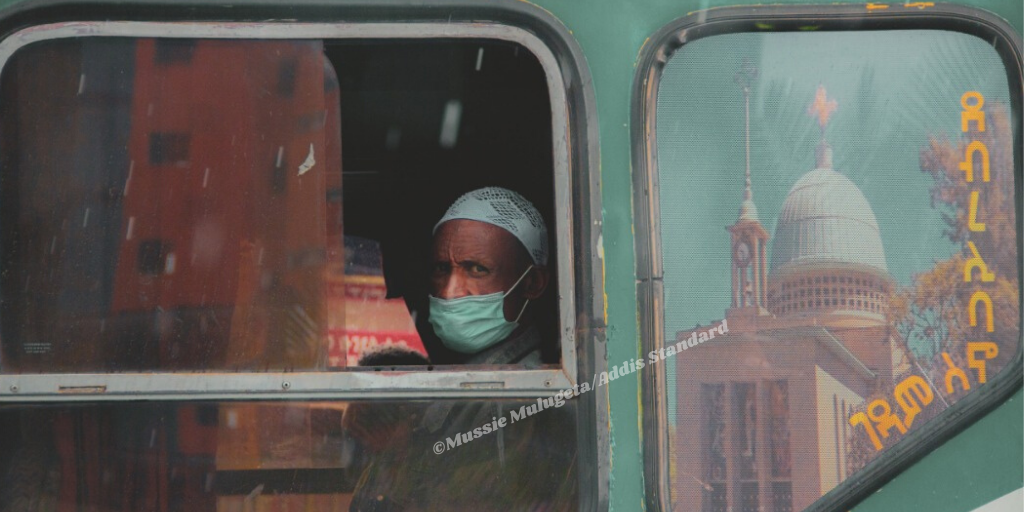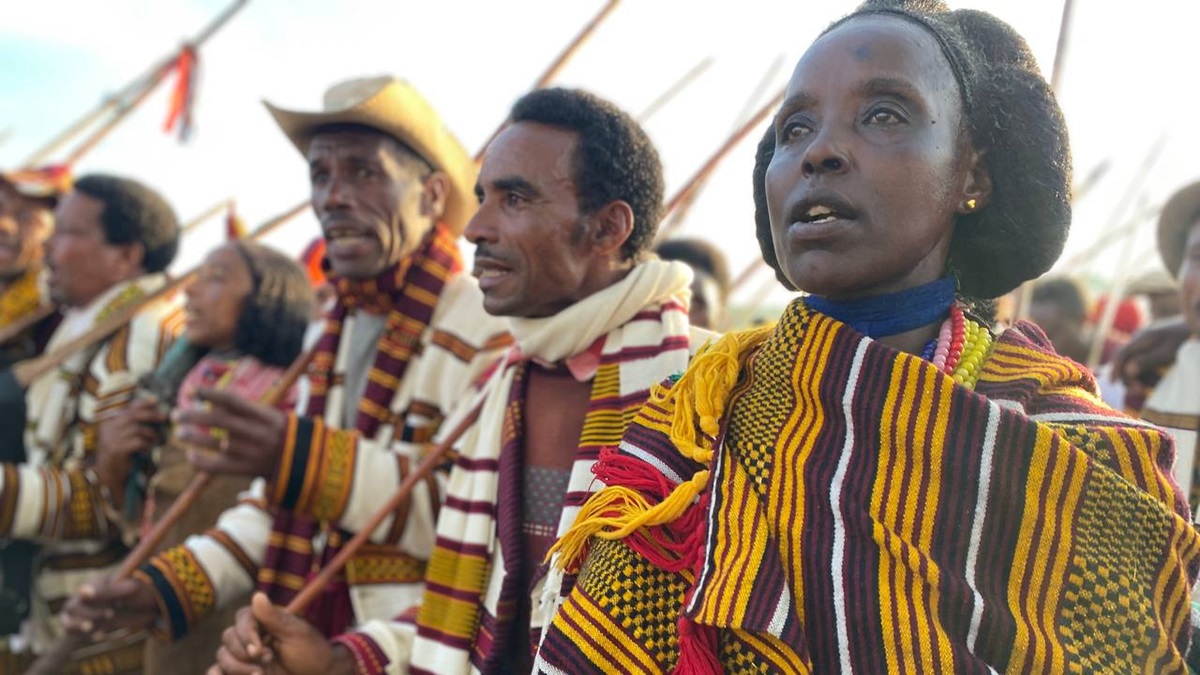Commentary: Transitioning from imported cases to community transmission: A strategy for public health security

Yohannes Kinfu (PhD)
Addis Abeba, May 12/2020 – Since the first novel Corona pandemic had emerged in China in late 2019 and spread rapidly around the world, the reaction and intensity to combat the disease had varied across nations. Some countries treated the pandemic as a brief incident (i.e. a skirmish), others approached it as a battle and took chances, while others saw it for what it is: as the number one public enemy and put themselves at a war footing. The reality of today’s world, viewed through the prism of global COVID-19 statistics, is a good reflection of each country’s effort, or the lack thereof in containing the virus.
In the case of Ethiopia, the story is less reassuring. While the partial lockdown may have initially slowed down new infections, it didn’t completely turn off the tap, nor was it able to tame it to a manageable level. Since the lockdown, new infections continued to rise and are now increasing at a much faster pace than during the pre-intervention period. From the point of view of the science of contagious disease control, the inability to stop new infections occurring after a certain period is a clear evidence of a collective gap in contact tracing, isolation and quarantine practices. With this, not only that Ethiopia lost the resources it invested to support the partial lockdown and quarantine practices (without a return), it also lost an important window of opportunity to keep infections at bay.
The immediate implication of this is that we no longer have the ‘luxury’ of dealing only with imported cases. As we go by, new infections will involve—and eventually dominated by – cases of community transmissions. Community transmissions are hard to trace, and even harder to manage compared to imported cases. Left unchecked numbers can grow quickly, spread rapidly and easily threaten the public health security of the country. And, as is evident from the daily COVID-19 reports coming out of the official body, Ministry of Health, the early signs of the transition from imported to community transmission are already with us.
So, what should the country do next is a natural question that comes to an inquisitive mind.
Solutions come in many forms: the art of policy making is the art of choosing among these alternatives. Some of these alternatives can be drawn from successful experiences elsewhere. For example, countries such as New Zealand and Australia, which had put themselves on a war footing with COVID-19 and took quick and effective action are already reaping dividends. In both countries new infections, which have been on a steady decline for weeks, are now occurring at a rate of a handful of cases per day, while fatalities remain very low by any global standard. In addition, unlike their ‘democratic peers’—such as the US and the UK—the countries have also been able to avoid health system crisis and maintain ‘fairness’ and dignity for the fallen. However, this successful story didn’t come cheap.
In the case of Australia, it involved a six-months long economic ‘Marshall plan’ that infused resources to the tune of 2 % of the country’s GDP, or over 300 billion dollars. This allowed, among others, direct and regular cash transfer to households whose employment can’t guarantee such payments and payments to businesses to keep their viability during and beyond the lockdown. It also offered free childcare services to families, particularly those frontline workers so that they can continue to do their jobs focused and undeterred by family responsibilities. The amount of investment is huge by any standards and no doubt may tighten up the government’s fiscal space in the years ahead, but it relieved the economic burden from households and small business that would have been severely affected by the complete shutdown required to arrest the virus. It also afforded the country the opportunity to follow ‘science’ without the social and economic pressures that may have forced other nations to open their economy up sooner than the optimum duration required to subdue the virus.
The success stories of countries like Australia and New Zealand, therefore, boils down to a couple of factors: economic ‘resilience’ and the ability to effectively enforce physical distancing rules, facilitated through a combination of soft hand interventions, inclusive governance and the social capital these nations built over the years. Both countries also have no land border, which means that local infections can easily be traced, detected and dealt with accordingly. On the other hand, emerging evidence from China, Singapore and Korea, countries that had also managed to keep the virus at bay, suggests that a second wave is a real possibility.
The considerations for next step for Ethiopia, therefore, need to pay attention to these experiences, and its own unique character. Specifically, the fact that it is a country of many borders, most of which are fluid with no effective mechanism of control over them; that it has either an empty pocket or that the purse is not deep enough to shoulder the economic costs of a complete and extended lockdown needed to bring cases to zero. And, a ‘zero case scenario’, though ideal, may be a long-term goal, may come only with the availability and full access to a vaccine or drug that is yet to be discovered.
This means that, going forward, the options revolve around effective contact tracing, movement restrictions, and, when required, completely sealing communities or the entire country itself. The strategy of a complete lcokdown of the entire country over an extended period is neither feasible nor would it guarantee success, as already alluded to. What is needed is, therefore, a national strategy that is realistic, inclusive, responsive and costs the country less by way of life and livelihood.
This strategy needs to be a national strategy and supported by the science of infection control and empowers local players for meaningful action. The temptation toward a piecemeal approach developed independently by regions and concocted as a ‘national strategy’ to satisfy the ego of political players should be avoided. It is also obvious that large political units, such as regions, are not best suited because risks, within these regions, are very divergent. Second, it will be too costly for the country to completely seal one of its regions until cases become under control, should infection levels become public health threat in a given location. Third, risk patterns for some parts of some regions may very well be linked to risks in other regions located next to them. For example, the fortunes and misfortunes of the special of zones of Oromia regional state surrounding to the capital Addis Abeba are intimately linked to COVID-19 related events the capital or the adjacent zones of Amhara regional state than perhaps in other regions of Oromia. The same logic applies to other regions.
Given the fragile health system in the country, a successful containment strategy for Ethiopia would require the creation of sustainable communities from the point of view of public health security, but also one that addresses peoples’ economic, social and governance needs. The idea is to create spatially ‘segregated’ communities constituting ‘homogeneous’ risk group or cluster of communities that are large enough to allow normal life to occur, but small enough to be monitored, and, if needed, internally quarantined to stop cross community infections. And there are reasons for this. They are easy to manage; large enough to allow sufficient economic activity to take place for a period of time and their impact on the wider country would be minimal should the time come for them to be completely sealed off.
This public health ‘security communities’ can also easily sustain orderly life within them, such as by way of planned allocation of market areas and places of worship on shifts. For example, within the urban areas of these communities people can be asked to do their shopping from specifically designated shopping areas in their neighborhood. As an example, people from my own birthplace, Afencho Ber, can be asked to shop from Shiro Meda instead of traveling to Merkato. If there are fewer marketplaces in these communities, residents can be assigned to different dates when they can do their shopping. These public health security communities can also establish local neighborhood shops of their own to supply basic and frequently consumed items. To ensure success, a system of compliance can be achieved through a combination of price-based incentives or simple ration card based restrictions.
The principles of ‘segregation’ based on space and time can also be extended to places of worship. Leaders of churches, mosques and other places of worship within these public health communities can designate and announce which places of worship people should go to for their spiritual need. And in such places, the feasibility of age-based shifts can also be explored. For example, elderly people can have separate schedules than for the young or they can be advised to follow the proceedings from the comfort of their home, as it is happening now. If the country prepares itself to open schools, the notion of shifts can also be extended to schools to reduce class sizes or manage recess times. The core idea is to create residential ‘segregation’, by space and time, along with a strong reporting system of visitors coming beyond the communities.
By so doing, the country can effectively create a ‘homogeneous’ risk group or cluster of communities that can be monitored, and when needed, internally quarantined to stop cross infection in places of common service. In the current setting, this appears to favor a governance structure revolving around zonal administrations to manage the current COVID-19 crisis. Beyond COVID-19, the process may eventually lead to a strengthened and empowered decentralization process in the country. It will also encourage people to focus on local realities and addresses the interests of the common (wo)man: to live life and live it with full happiness. In the very long-term, this may bring the feasibility of existing political structure of the regional states system to question and encourage needed debate on the importance of considering such aspects as health and livelihood in the creation of a better governance structure for Ethiopia, beyond the cultural paradigm that has dominated the space for quite sometime. AS
_________________________________________//___________________________________

Editor’s note: Yohannes Kinfu (PhD), is an economist and demographer by training, with research interests in the statistical and mathematical modelling of diseases, population processes, risk factors and the economics of health care in global context. He was an employee of the World Health Organization in Geneva, Switzerland. Currently, he is an Associate Professor of Global Health at the Faculty of Health, University of Canberra; Associate Professor of Population Medicine at College of Medicine, Qatar University, and an Associate Professor (Affiliate) of Health Metrics at Department of Health Metrics Sciences, University of Washington. He also holds an Honorary Fellow position at Murdoch Children’s Research Institute at the Royal Children Hospital in Melbourne, Australia.
He can be reached at: ykinfu@uw.edu
Disclaimer: The views expressed in this opinion are that of the author and do not represent any of the institution he is affiliated with.







